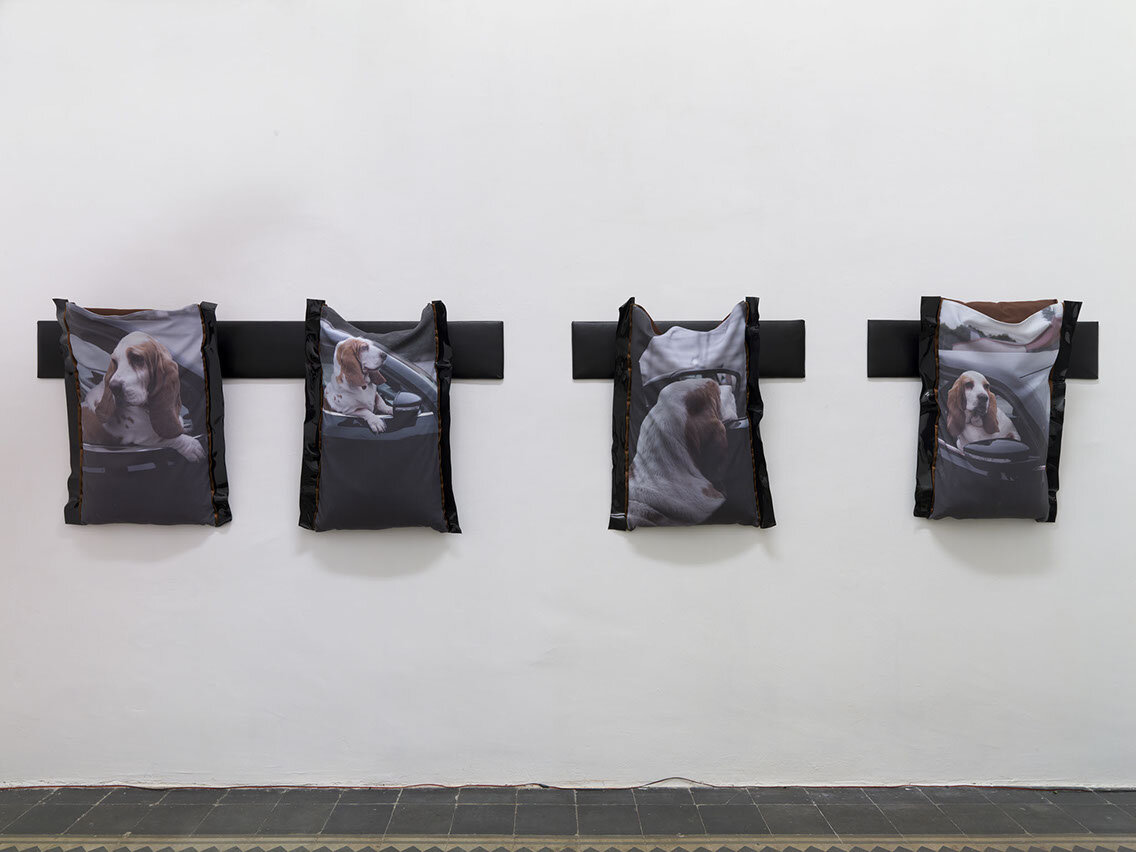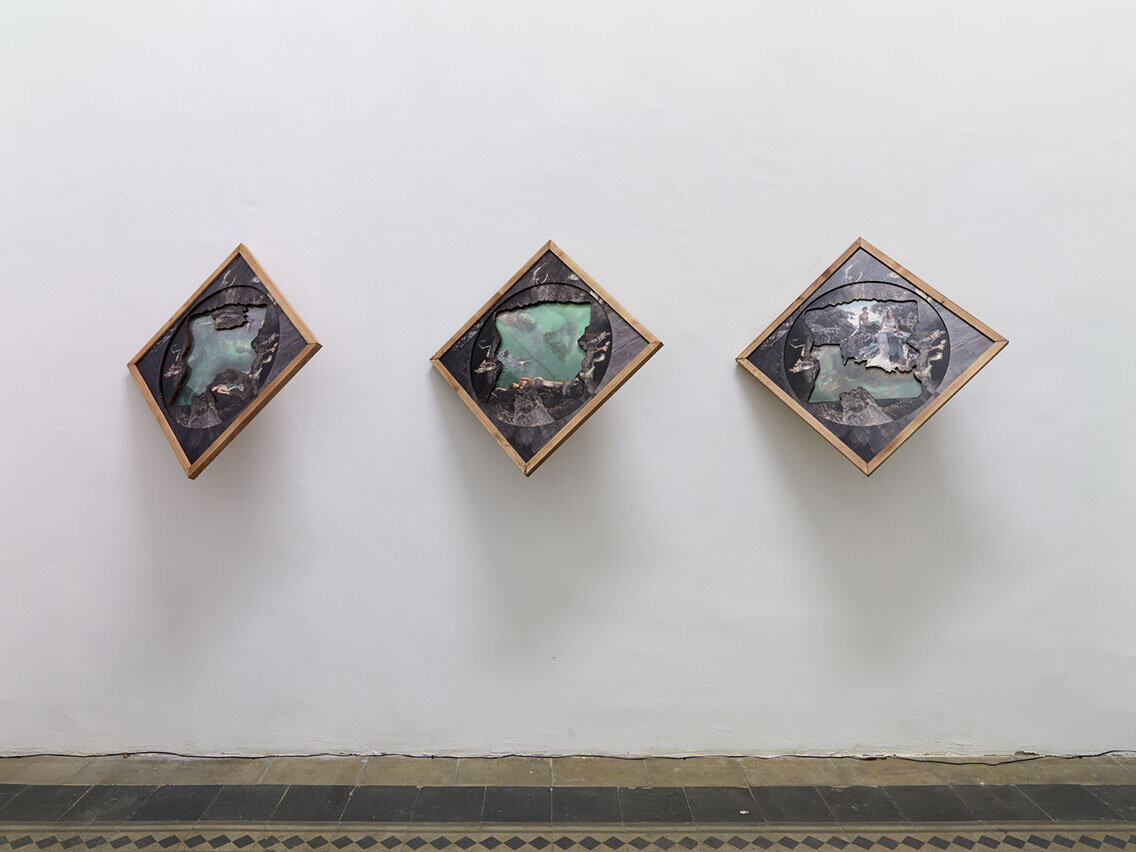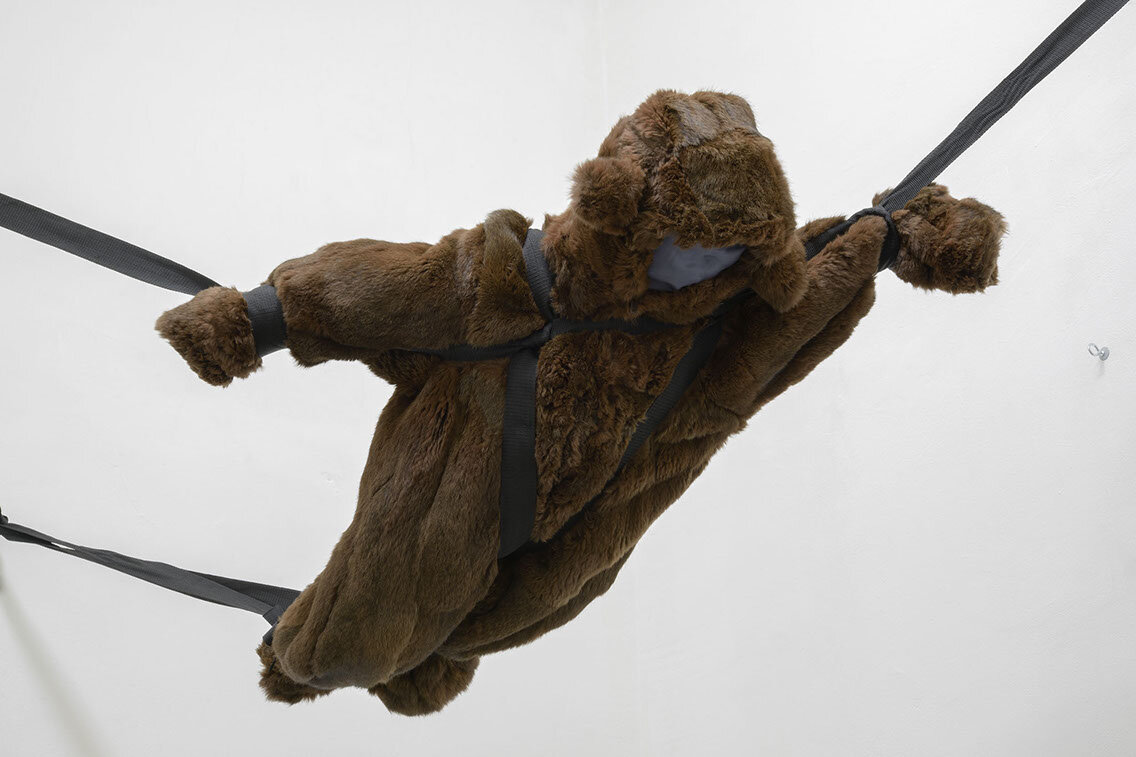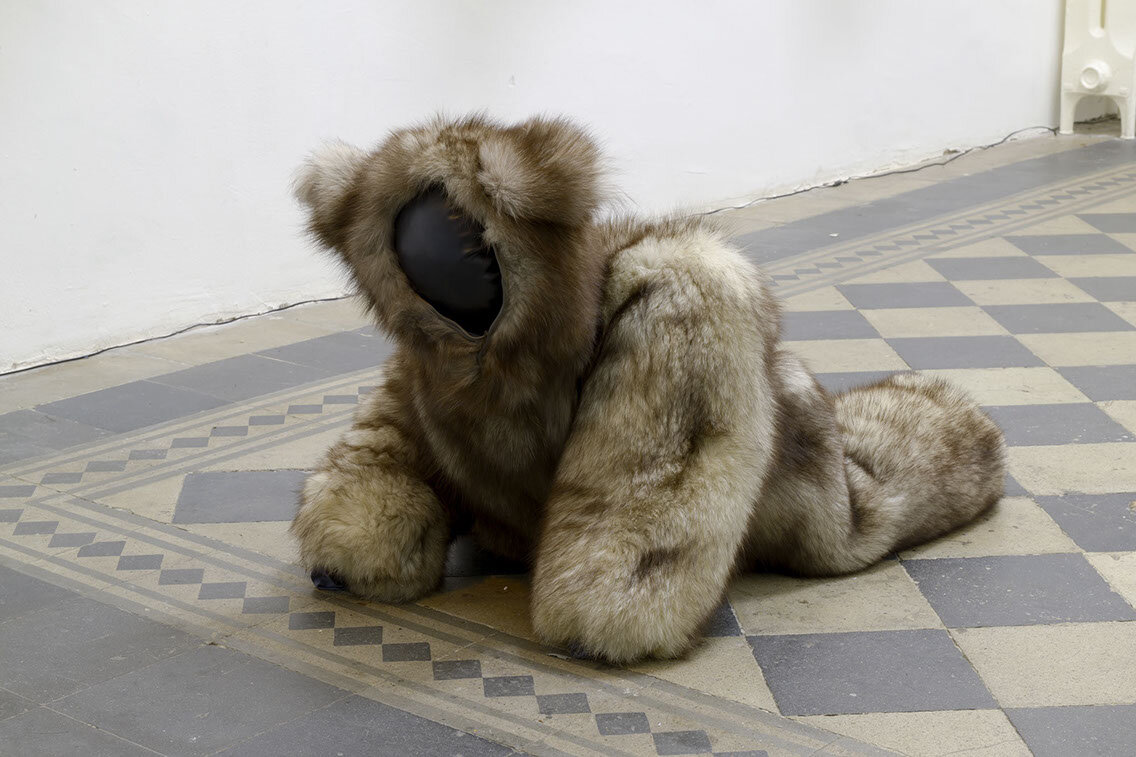“Che cattiva Katie Fox” [How mean Katie Fox is!] is the first solo exhibition by Beatrice Marchi (1986, Gallarate, Varese; lives in Milan); and is the first exhibition hosted within these walls to be worthy of the sequence of hashtags: #dance #sex #art #pop #tech.
Ça va sans dire, Beatrice is a woman of choice; and the determination and inventiveness entailed in her creative process prove this—a process manoeuvring through and across several media (from photography, to installation, to music production), but never embracing any of them a priori. Beatrice’s artworks in fact display a pronouncedly camp attitude: if this stems from a sheer celebration of ambiguity as a value, or from a more programmatic attempt at bypassing medium specificity are questions which the works make of the viewer… By the way, in order to prevent that the artworks’ nature remains a taboo and so facilitate their ‘communication’, we would invite the viewer to agree that those in the show, for example, are: an RnB song (Never Be My Friend, 2014), pillowcases (Occhi tristi, 2014), puppy dresses (Squirry, Foxy, 2014), and frames for daydream images (B.B. Blue, Mandy & Sandy at the Beach, 2014).
The exhibition’s protagonist is Katie Fox: an avatar, a Basset Hound dog, a younger sister, a fantasy character, a samaritan girl, a pop star, a jeune fille, a mistress, and so on. Her different incarnations furnish a set of case studies, to be exploited for testing logics and dynamics behind the exercise of moral judgment and its affecting the perception of the social context we belong to. Why for example are the behavior and the sensitivity of certain characters, such as children and animals, free from moral judgement? And why in others, such as teenagers, do they take on excessively moralistic attitudes? As with children and animals, nature ignores culture, for teenagers love can only be followed by hate— and in between there remains only opportunism, the role playing which leads one to pretend to love or hate… The artworks in the show distil aesthetic languages which mass culture has apparently digested, but have nevertheless conserved an intrinsically radical feature which allows for any of their ‘formalizations’ which lack a true communicative need to instead assume grotesque tones. For example, cinema, comics and video games have liberated fantasy fiction in the adults world; young women dressed up like mermaids inhabit the limbo between a carnival mask, typical of a child’s imagination, and an alluring outfit, which betrays an awareness of the seductive power of a mature body. To continue the argument: today the sound of RnB is universally recognized within the vocabulary of pop music; an RnB song, in which male voices mimic female voices, themselves replicating an overblown chat conversation between hot-tempered teenagers, suggests that mishmash of a craving for social redemption and schmaltzy emotivity which RnB embodies—that’s how we ball out. And we won’t carry on into discussing the sexual deviations of BDSM practices, and the blend of pleasure and pain. Beatrice Marchi’s artworks seem to imply a vision in which art is trapped in its own commenting strategies and ‘cynical’ interpretation of social phenomena; art itself dishes out a plethora of judgements, which do not restrict themselves to aesthetic categories—its area of jurisdiction, one could say—but overflow into the reign of morality. Artistic language betrays indeed a tendency toward affectation: it is often mischievously cryptic, self referential, boastful, and again moralistic; it tends to repress any vision of art as a scenario of sharing and collaboration, and celebration of the wide emotional spectrum encompassed by human heart… Even this text isn’t free from this criticism: it pursues assertiveness, in order to legitimize itself and the subject it depicts—unfortunately, it won’t ever be strong enough to present these artworks as the creations of a woman in the prime of her life, a failed lap dancer, and probably our BFF.
- Michele D’Aurizio

Beatrice Marchi
'Occhi tristi', 2014
Digital print on polyester, polystyrene, satin, faux leather, padding
Each: 82 × 80 × 14 cm
Unique

Beatrice Marchi
'B.B. Blue, Mandy & Sandy at the Beach', 2014
Digital print on wood, plexiglass, steel
Each: 50 × 50 × 4 cm
Unique

Beatrice Marchi
'Squirry: il costume da scoiattolo per bambini e cani', 2014
Fur, satin, padding, latex
Dimensions variable
Unique

Beatrice Marchi
'Foxy: il costume da volpe per bambini e cani', 2014
Fur, padding, latex, steel, rubber
Dimensions variable
Unique